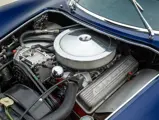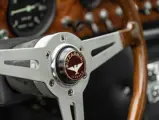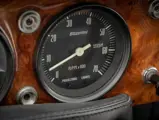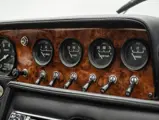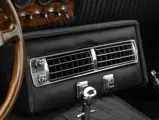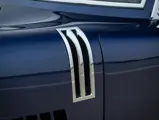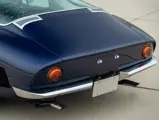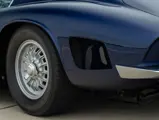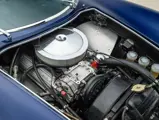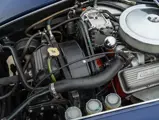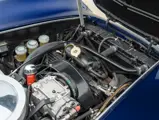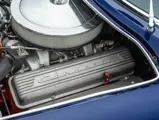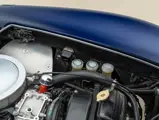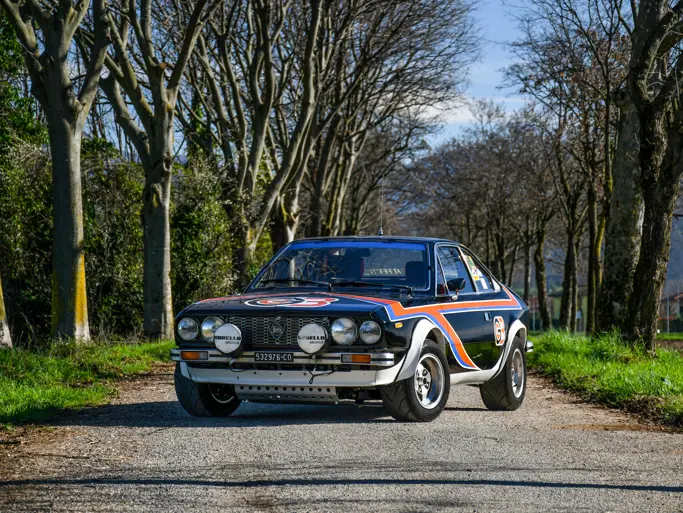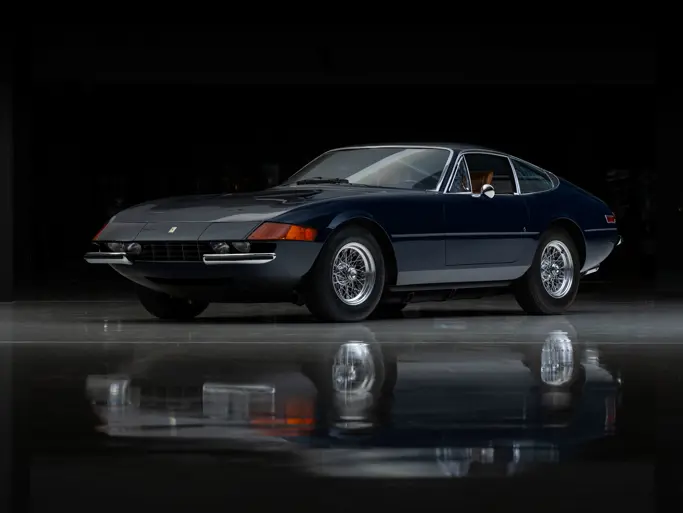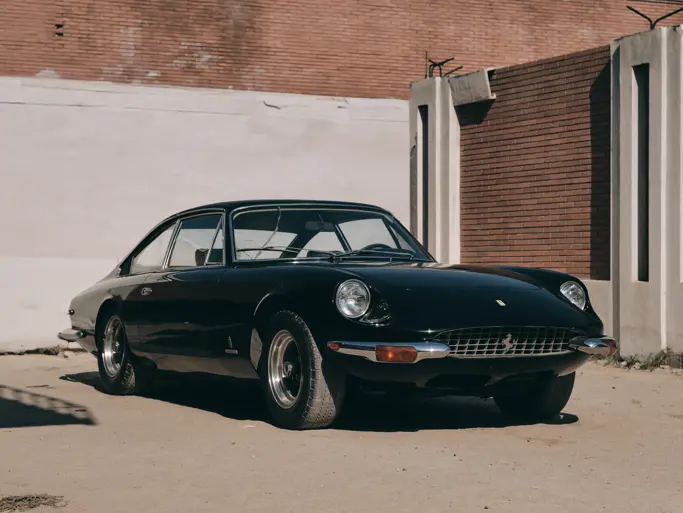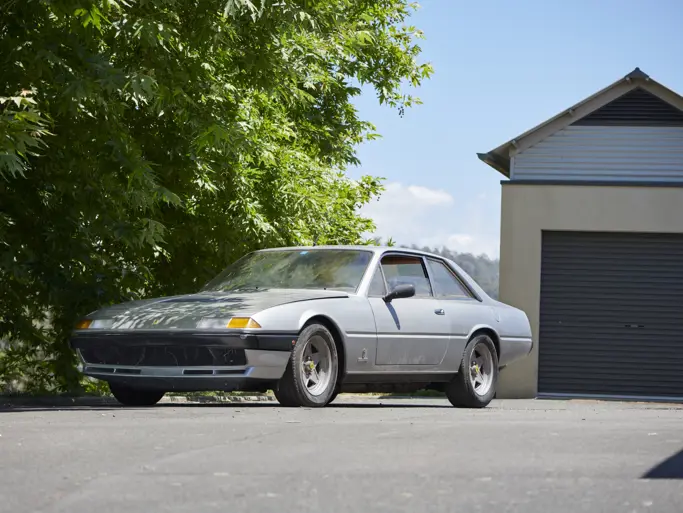Monterey 2023
1968 Bizzarrini 5300 GT Strada Alloy
{{lr.item.text}}
$915,250 USD | Sold
 | Monterey, California
| Monterey, California
{{internetCurrentBid}}
{{internetTimeLeft}}

- A paradigm of design and performance; the physical bookend to the eponymous marque of legendary engineer Giotto Bizzarrini
- Among the last of 86 alloy-bodied examples produced
- Accompanied by documentation compiled by marque authority, Jack Koobs de Hartog
- Benefits from over $130,000 of restoration work performed since late 2021; presented today in its factory-correct color combination
- Desirably equipped with air conditioning system, power windows, and Campagnolo center-lock, forged magnesium wheels
At the 1963 Turin Motor Show, the ISO Rivolta company of Milanese industrialist Renzo Rivolta debuted two variants of their new Grifo sportscar. The Grifo A3/L was on the Bertone stand, while the A3/C debuted on Iso’s stand; only the latter was built by Giotto Bizzarrini’s consultancy in Livorno. Despite significant differences, both variants sported Giugiaro-designed coachwork, and they synergistically presented a stunning combination of Italian styling, race-developed underpinnings, and reliable, American V-8 power.
Convinced that the A3/C’s incredibly low, slippery profile and front-mid-mounted 5.3-liter V-8 engine configuration could translate into motorsports success, for the next 18 months Bizzarrini made the A3/C under agreement with Iso. The car neared 190 mph on the Mulsanne Straight in 1965, and the Bizzarrini-built Grifos won the GT class at Le Mans in 1964 and, again, in 1965. Following the latter victory, Bizzarrini and Iso struck a compromise wherein Bizzarrini would continue to build the Grifo under his own name as the 5300 GT in both “Strada” roadgoing form, and “Corsa” variants for racing.
While the Bizzarrini Strada is ostensibly a street car, its specifications read like those of an all-out competition car, with lightweight aluminum bodywork, a fabricated platform chassis, and a semi-monocoque body riveted to the frame. This advanced chassis, combined with near-perfect weight distribution which utilized lessons gleaned from Bizzarrini’s previous work on Ferrari’s 250 GTO, resulted in outstanding performance and incredible handling.
Output of the Strada’s Chevrolet V-8 engine ranged between 350 and 420 horsepower, providing a claimed top speed of up to 180 mph. And at an original price point nearing $10,500, the Strada’s performance was simply unrivaled, provided one could even find an example for sale. Due to Bizzarrini’s famed proclivity for competition, very few road-going examples of the 5300 GT Strada were produced between mid-1965 and early 1969, when the short-lived company declared bankruptcy in the aftermath of a fraudulent investment scheme. Rarer—and faster—than any contemporary roadgoing production model from Ferrari, Lamborghini, or Maserati, the Bizzarrini 5300 Strada GT is a true paradigm of design and performance.
Documentation supplied by marque authority Jack Koobs de Hartog illustrates that this 5300 GT Strada, IA3 0323, was among the last of those 86 alloy-bodied examples completed by Bizzarrini. Hartog’s report on this illustrious Strada notes that it was certainly delivered new to California, and originally finished in the attractive color scheme of blue over black leather. Chassis 0323 is recorded as having remained in Southern California among a short chain of enthusiastic owners from new until 2017, when it was acquired by a noted collector of mid-century Italian sportscars and moved to his residence in Massachusetts.
Having been repainted under previous ownership from its original blue to a stereotypical Italian red, 0323’s new owner submitted it to a complete cosmetic restoration back to original specifications. At this time, the car’s alloy bodywork proved to be in remarkably good condition, requiring only minor corrections to relieve some of its more characterful artifacts of Bizzarrini’s production line—in essence producing a “better than new” finish. Previous repairs following a 2003 fender-bender at the car’s rear proved to have followed this aforementioned philosophy. Paint chips discovered during the many hours it took to strip the car down to its bare alloy shell were fastidiously recreated using modern color-blending technology, while the interior was similarly retrimmed in black leather using the correct upholstery patterns.
As presented today, 0323 is desirably equipped with power windows and an air conditioning system—an absolute necessity to counteract the radiant heat unleashed by the front-mid-mounted V-8 engine. Sparingly used since the completion of this masterful cosmetic restoration, 0323 retains many superb and correct details throughout, and this fact is made most obviously apparent with one glance at its set of Campagnolo center-lock, forged magnesium wheels wrapped in period-style Avon tires.
Eminently presentable for the most prestigious concours and classic racing events, this is an exceptional gran turismo car in all respects. Perhaps Giotto Bizzarrini, the “Father of the 250 GTO,” said it best: “I started with the idea of the Ferrari GTO and set about trying to improve on it.”



